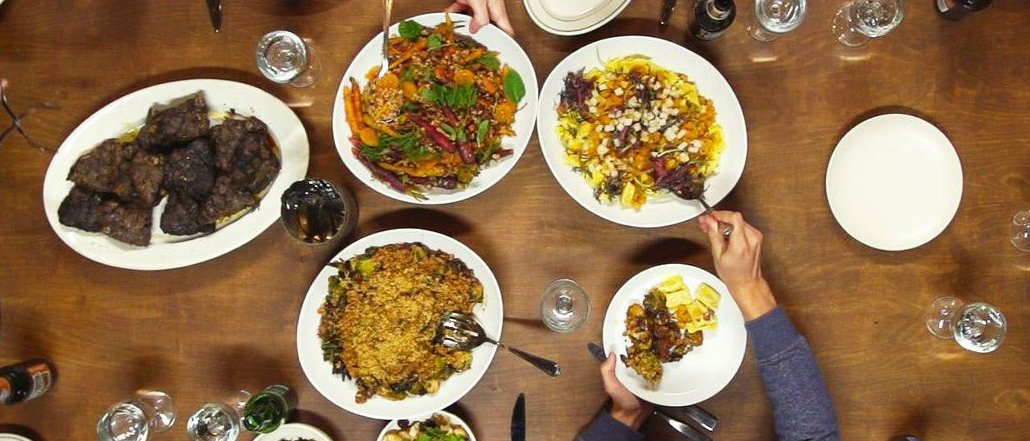How upstart Tastemade is taking on food media giants with a distributed video strategy

Food is a crowded space, but upstart Tastemade has carved out a growing niche for itself with a distributed video strategy atop platforms.
The 3-year-old company, with $40 million in funding from a group of investors that include Food Network owner Scripps Networks Interactive, had the luxury of starting out at the dawn of the platform era. Its initial focus was not on an owned property but on YouTube. Now, Tastemade boasts nearly half a billion YouTube views a month and is tailoring content for Facebook and Apple TV.
“We look at our viewership data — views, engagement, social sharing — across all of our distribution platforms very closely and try to provide the best possible experience for our audience on each platform,” said Oren Katzeff, head of programming for Tastemade.
Here’s how they do it.
Explosive growth on Facebook.
As with much of the Web video industry, Tastemade is seeing huge audience growth on Facebook. Seven months ago, Katzeff said the company had only a couple of hundred thousand followers and was doing less than half-a-million views per month on the social network. Now, Tastemade has more than 2.5 million fans and, according to Tubular Labs data, generated 165 million views on Facebook in June — fourth-best among video creators and publishers tracked by the social video analytics company. (Across Tastemade’s network, that number jumps up to 359 million views on Facebook.)
The growth is due to a content strategy that’s customized to how people are watching and sharing videos on Facebook.
“We know to some extent there are a material number of views happening on videos that kick off with no audio. A lot of viewing is also happening on content that pops up in your feed, ” said Katzeff. “This means you have to grab the audience’s attention quickly, before they scroll by.” For Tastemade, this means getting to a beautiful shot of the finished meal (if it’s a recipe video) or a beautiful location (if it’s a travel video) early on in the clip.
YouTube and Facebook are complementary, not competitive.
Tastemade is no small-timer on YouTube, either. According to the company, its network now has 86 million subscribers and hits 450 million views per month on the video site. (Its flagship channel has nearly 450,000 subscribers.)
Continuing with its platform-specific approach to distribution, Tastemade typically puts full episodes of its originals on YouTube. The site is all about video, after all, and people are expecting to watch the full video instead of a snippet. This has actually made it easier for Tastemade to not cannibalize its audience on one video platform at the hands of another.
Take, for example, the following episode of the Tastemade series, “The Grill Iron.” The network launched the full episode on YouTube and published one of the episode’s segments, which focuses on bacon, on Facebook. On YouTube, the 11-minute episode has collected more than 365,000 views. On Facebook, the three-minute segment has more than 711,000 views.
Tastemade might take it even a step further down the road and actually create multiple versions of its original productions to fit different platforms. In this scenario, the “two-minute version would look and feel like the 10-minute version, but with a slightly different taste,” said Katzeff.
Going long-form on Apple TV.
Just as it’s hosting shorter versions of some of its content on Facebook, Tastemade is programming a longer viewing experience on its Apple TV app.
Going back to “The Grill Iron” example, the network released every episode of the series at once on its Apple TV app, giving users the chance to “lean back” and binge on the content. “We know people like to [binge] on Apple TV, and continue to,” said Katzeff.
Other long-form viewing options on the Apple TV app include “Tastemade TV,” which packages multiple short-form episodes across food and travel into an hourlong program, and Tastemade Plus, its fledgling subscription play, which currently offer “Tastemade Classes,” 40- to 50-minute programs teaching various recipes. So far Tastemade has been “satisfied” with how Plus has grown and will continue to invest in and promote it, said Katzeff.
Looking ahead, Tastemade might also produce 20- or 30-minute versions of its original series for the streaming TV platform — though Katzeff is quick to warn that the company won’t do it just because it’s able to. “First and foremost, it has to be a great story,” he said. “If we have a 22-minute episode on Apple TV, and there is a great way to tell that same story in a short-form format, then we will do it. But we’re not going to do it just to do it.”
Images via Tastemade
More in Media

Media Briefing: ‘Cloudflare is locking the door’: Publishers celebrate victory against AI bot crawlers
After years of miserably watching their content get ransacked for free by millions of unidentified AI bot crawlers, publishers were finally thrown a viable lifeline.

How Vogue could navigate potential industry headwinds as Anna Wintour — who agency execs say made ad dollars flow — brings on new edit lead
Anna Wintour’s successor at Vogue will have to overcome the myriad of challenges facing fashion media and the digital publishing ecosystem.

Here are the biggest misconceptions about AI content scraping
An increase in bots scraping content from publishers’ sites represents a huge threat to their businesses. But scraping for AI training and scraping for real-time outputs present different challenges and opportunities.





